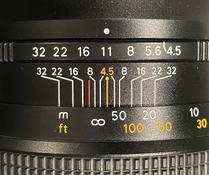As others have mentioned, modern 'Infrared' film is not the same as the true infrared film that was available in the past. Don't worry too much about focus. The photo attached was taken with a Bronica S2 on Rollei Infrared and a generic 720nm filter. I hand metered using an ASA/ISO of 6. I don't remember the exposure settings but it was something in the 1/8 or 1/4 second area and shot on a tripod.
If you shot on a tripod and stop down, no problem. I don't, so focusing is something for me to consider.





